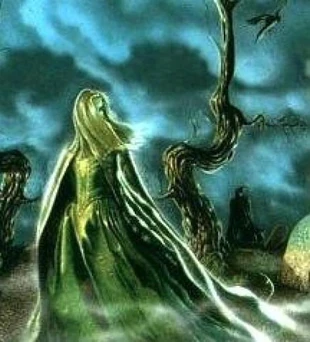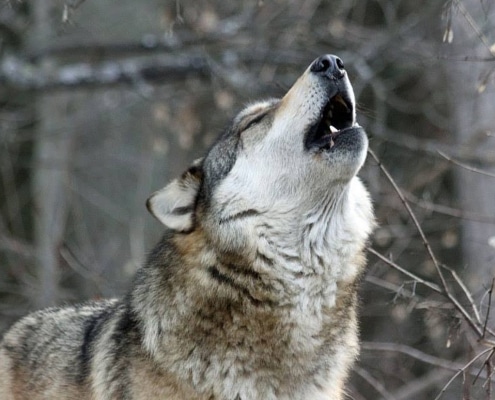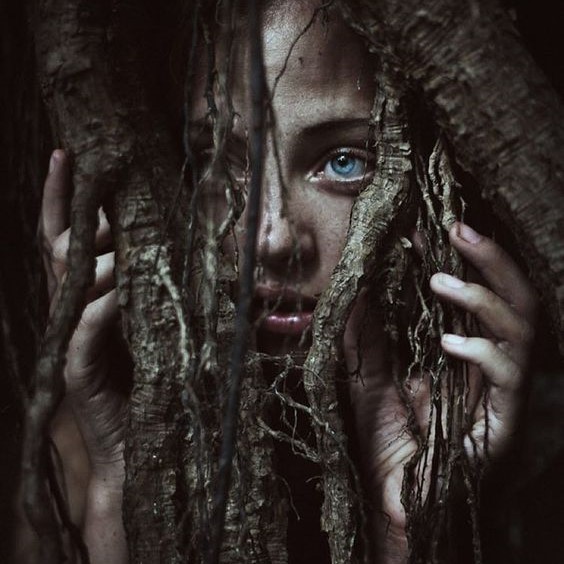The pooka (or púca) are some of the most
feared shapshifting creatures in Irish mythology.
They were believed to bring either good or bad luck to those who
see them and were especially feared around times of harvest. As a good or bad harvest could mean the difference between life and death during a hard winter.
They often take the form of a wild dog, with red sulfurous
eyes, but could also take the form of a goblin or human with animal
features. According to Celtic mythology, they are often written as evil
and devilish.
However, there are also tales of them warning humans of accidents or being called on for protection.
A similar fairy entity appears in the mythology of Scotland, Wales,
Cornwall, the Channel Islands.
Often thought of as an animal
spirit, some accounts believe it gets its name from Poc, meaning
he-goat in Irish. In fact, Pooka is a changeling and can take an animal
or human form; like a horse, donkey, cat, dog, bull, young man, or even a
voluptuous young woman. The animal Pooka is usually jet black with
fiery golden or red eyes. Some associate it with the devil!
They live deep in the mountains and hillside. Depending on the
part of Ireland your in, Pooka was either helpful or harmful. It's been known to help farmers for example, but it can
also wreak havoc in a farm.
Though in general an encounter with y a poika usually seen as a bad oman.
Poika is know for it's intelligence and deceptive nature and it's ability to lie convincingly to it's target. It is
also considered a fertility spirit in some regions since it has the power to create or destroy. Another one of it's abilities is human speech, it is a gifted prophesier.
November is the month of Pooka. In Ireland essentially at Halloween, children went out dressed as pooka and collected treats or played pranks(early truck or treating) but others stayed indoors, fearful
of stories they had heard of what Pooka did to children. The Pooka is considered a bogeyman in some places throughout Ireland.
This fay is also documented in the classic literature of Ireland and Britain. Irish poet and playwright W. B. Yeats
depicts Pooka as an eagle, while Irish novelist and playwright Brian
O’Nolan, who wrote under the pseudonym Flann O’Brien, was also so
inspired. O’Brien’s masterpiece, At Swim-Two-Birds, features a character called Pooka MacPhillemey, a “member of devil class”. In William Shakespeare’s A Midsummer Night’s Dream, Puck is a mischievous and quick-witted sprite responsible for setting many of the play’s events in motion through his magic.
Often appearing as a horse, Pooka sometimes gallops across the
countryside knocking down fences and gates and destroying crops. In this
form, he likes to take a rider, usually a drunkard, on a wild ride
all night and shake him off in the early morning. This person,
already heavily inebriated, is also under the spell and has no
recollection of what happened usually. This often accounts for why some people
who, having gotten very drunk, report that they have no idea what
happened the previous night.
The only man to ever successfully ride a Pooka was High King of Ireland
and founder of O’Brien dynasty, Brian Boruma Mac Cennetig (941-1014),
or more commonly known as Brian Boru. Brian managed to control the magic
of the creature by using a special bridle that used three hairs of
Pooka’s tail. Brian’s physical prowess meant he was able to stay on its
back until it was exhausted Pooka then surrendered to Brian.
The king forced it to agree to two promises. First, it no longer
tormented Christian people and ruined their property, and second it
would never again attack an Irishman, except those who were drunk or
were abroad with evil intent. Although Pooka agreed, it appears to have
forgotten its promises over the years.
There have been hundreds of pooka sightings all over the country throughout the centuries but the most famous story is an animal spirit that gave its name to
Poulaphuca (Hole of Pooka) at the boundary of River Liffey between
counties Kildare and Wicklow.
Now a site of a
hydroelectric power station, where the river flows through a narrow
gorge before plunging 150 feet (46 meters) in three stages. Under the
second drop there is a pool, and this is called Hole of Pooka. Irish
author Padraig O’Farrell (1932-2004) tells a story which was
inspired by the written account of an anonymous Kildare man. The writer
also has an interesting postscript at the end:
In November 1813, Kildare Hunt known as Killing Kildares set out. Having
indulged in traditional stirrup cup at Tipper crossroads, near Naas,
hunt failed to raise a fox until it was approaching Tipperkevin, north
of Ballymore Eustace, county Kildare. Here a large fox appeared and led a
course towards Liffey. Simultaneously, an un-mounted black horse
appeared, that did not belong to any of riders. It was Pooka!
.
"The
terrain was difficult and fox ran fast, so that near Liffey, only one
of members of hunt, a man named Grennan, and horse, who was really
Pooka, remained with pack. The gorge was in full spate but hounds were
gaining on their quarry and started to pick their way across rocks.
Seeing danger, Grennan attempted to recall hounds, but Pooka ahead of
them was tempting them onwards. The fox headed for ledge on narrow part
of gorge then, seeing Pooka’s red eyes spitting fire, fox jumped. It
missed ledge, falling into turbulent waters below. The Pooka easily
leaped across gorge, disappearing into woodlands, but pack of hounds
hard on scent of fox went headlong into pool.
.
"Looking down, Grennan saw fox and hounds trying desperately
to swim to safety through swirling swell; other hounds dashed against
rocks were yelping in pain and dying. He wept as most of pack went
under. Suddenly his sorrow give way to terror, he heard a diabolical
neighing, like an animal laughing – from woods opposite. Grennan knew
then it was Pooka."
The writer of the original story describes how in the 1930s, as he
stood above the valleys of Liffey and King’s River, a sudden sadness
came over him and he wept at the sight of so many humble homes that
would soon be submerged forever by Blessington Lakes, created to supply
water for a power station at Poulaphuca.
Between 1938 and 1940 seventy-six houses were demolished and bridges
at Humphreystown, Baltyboys, and Burgage were blown up before the entire
valley was flooded for the hydroelectric power station. A Protestant
church, St. Mark’s, built in 1682 was also submerged. To this day there
have been many claims of people hearing bells tolling beneath the waters
of lakes.
...
.jpeg)
-p162-Nuckalavee-illustr-J_Torrance_(cropped).jpg)



.jpeg)
.jpeg)








